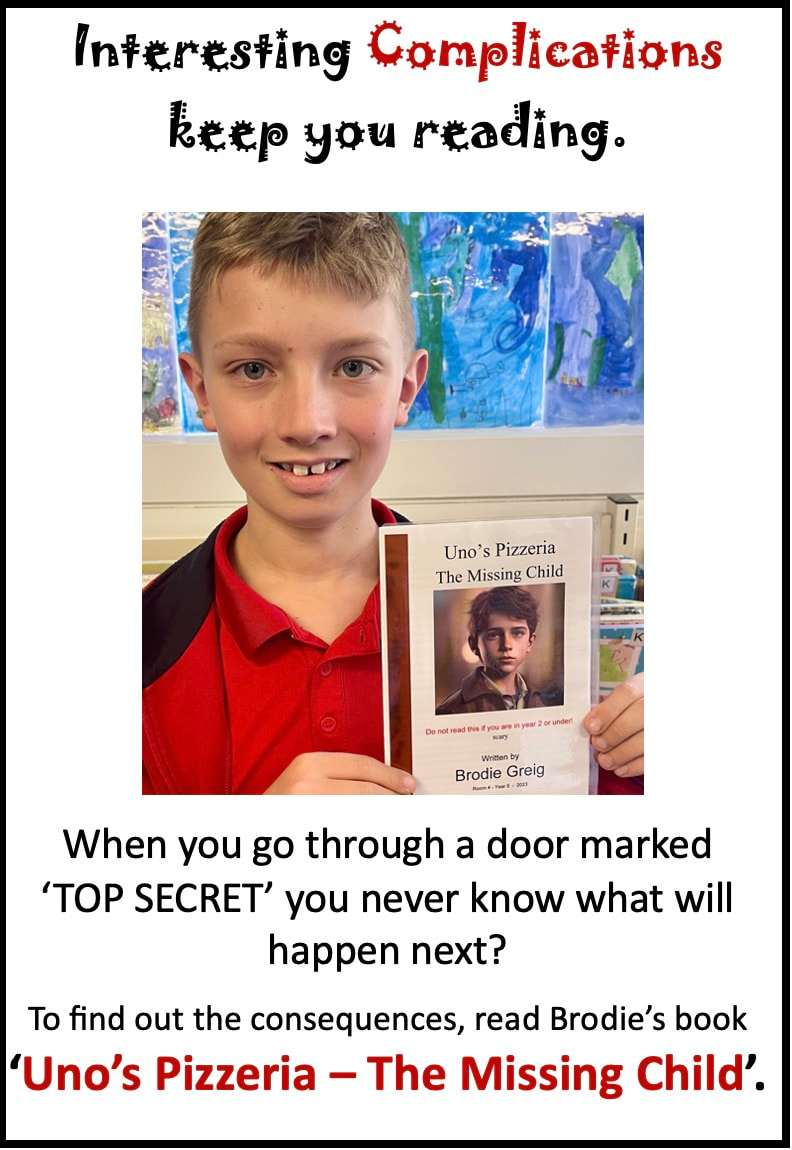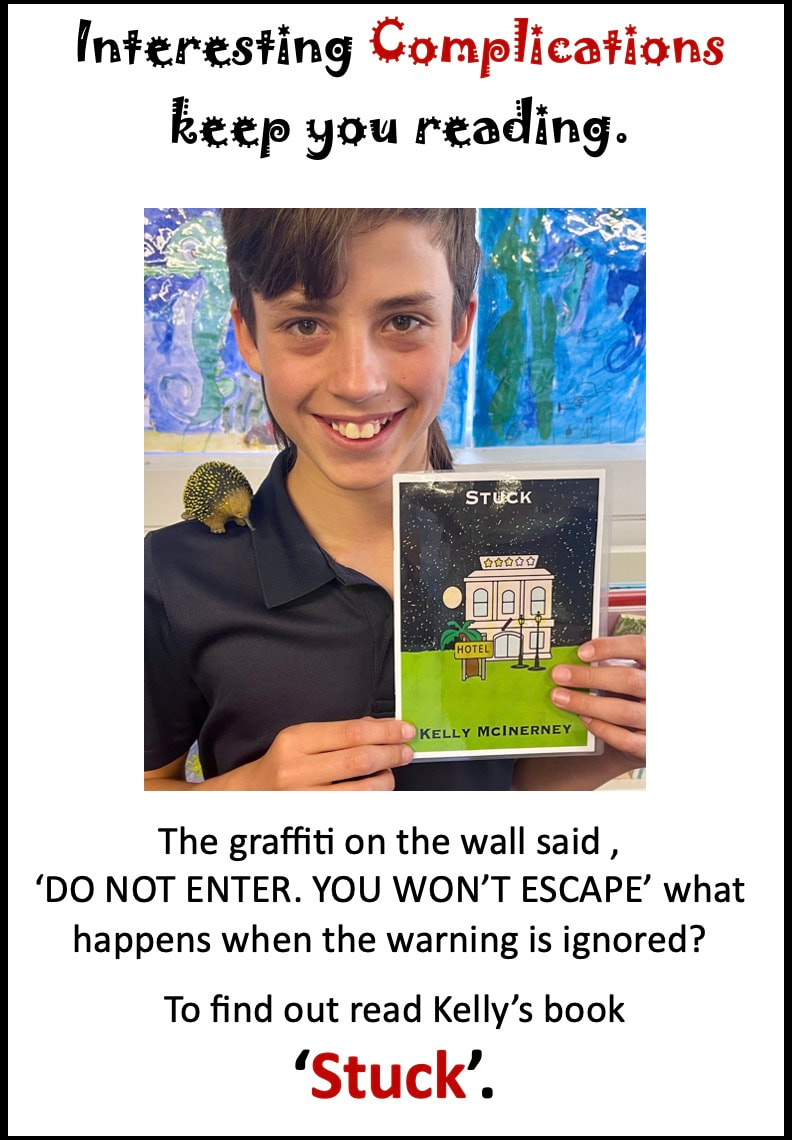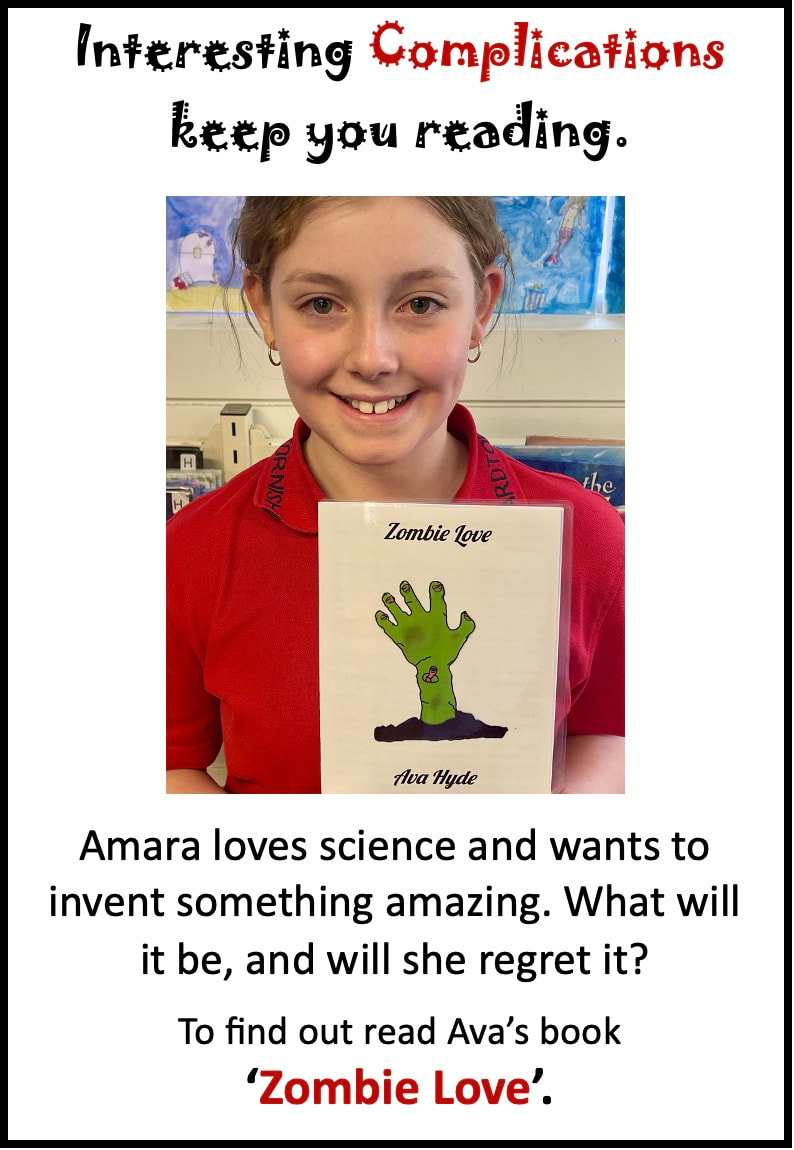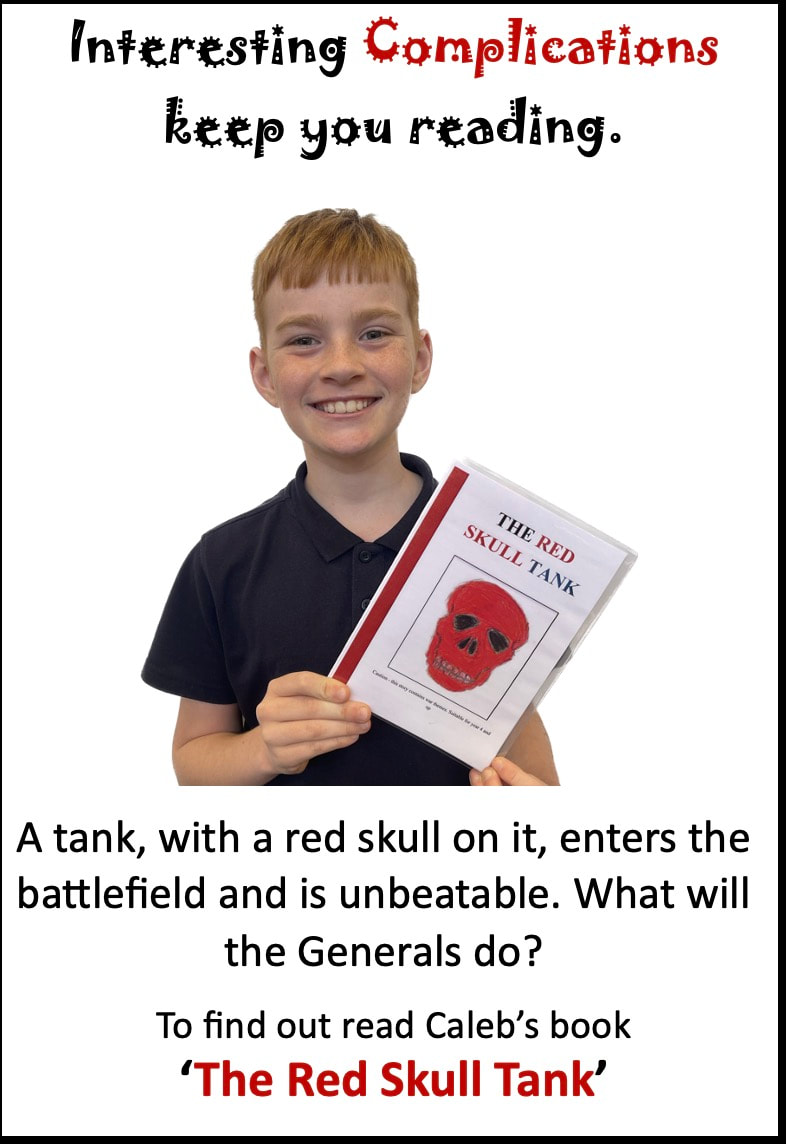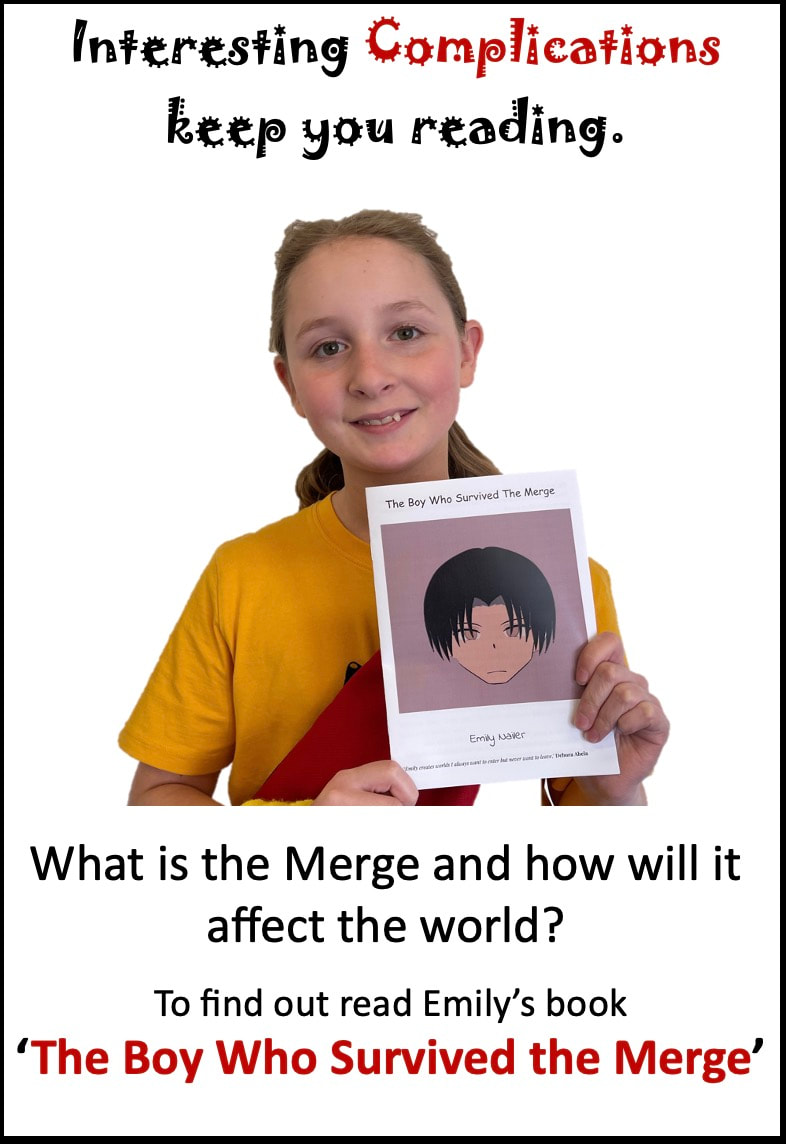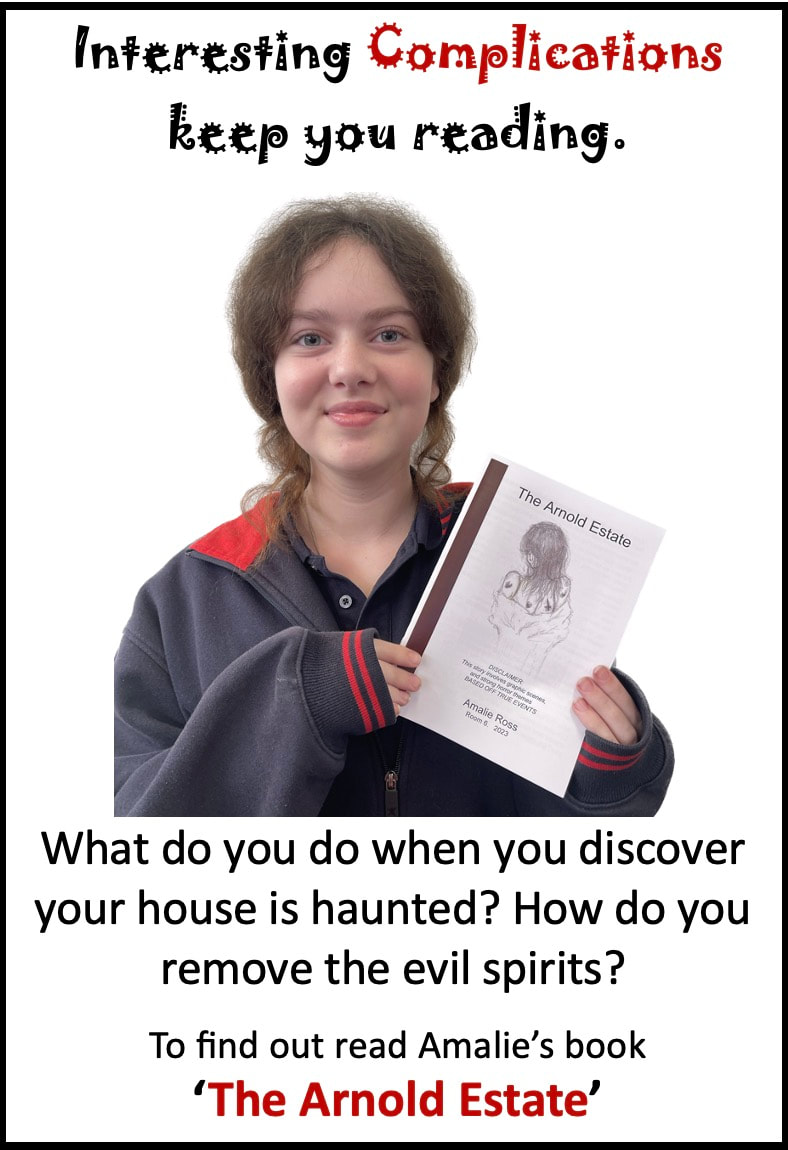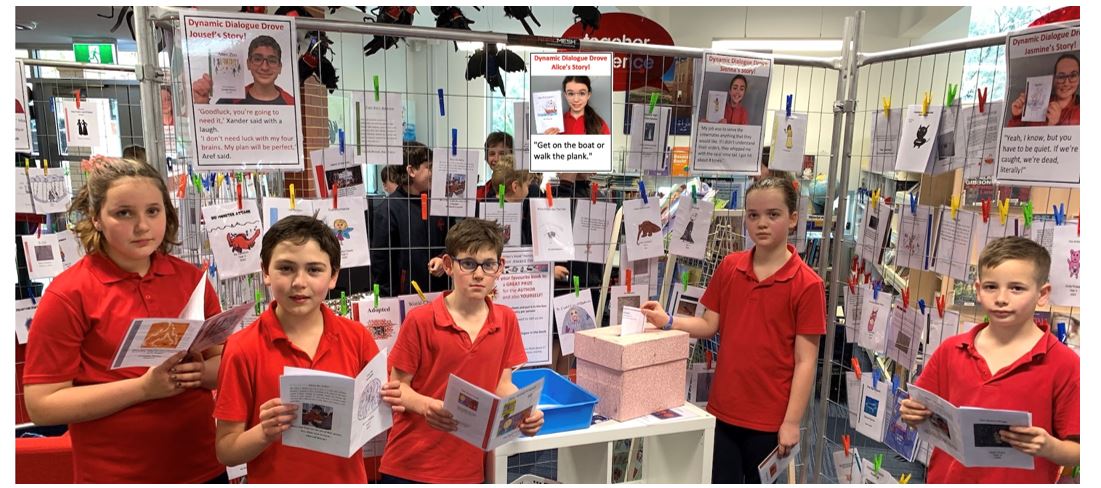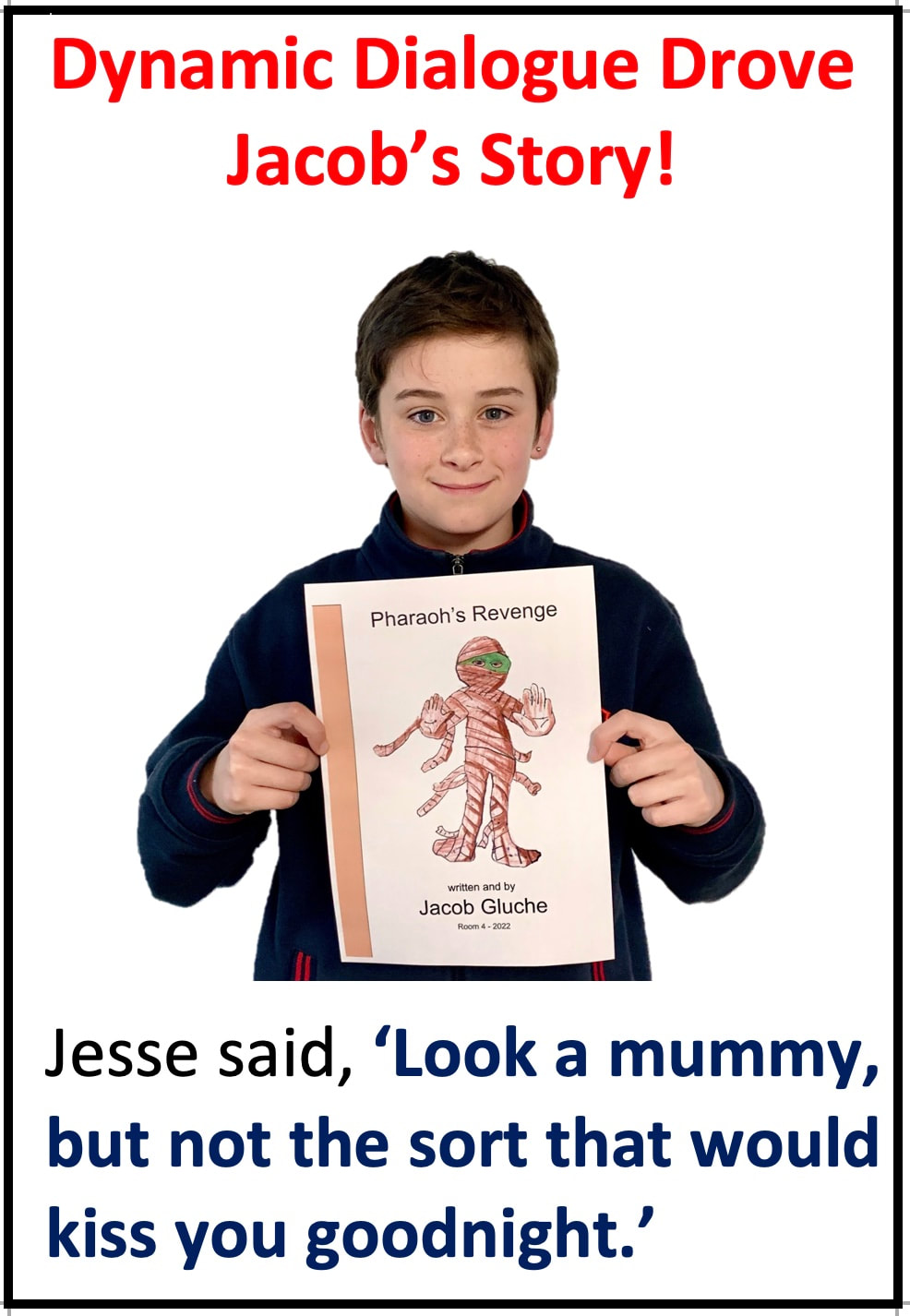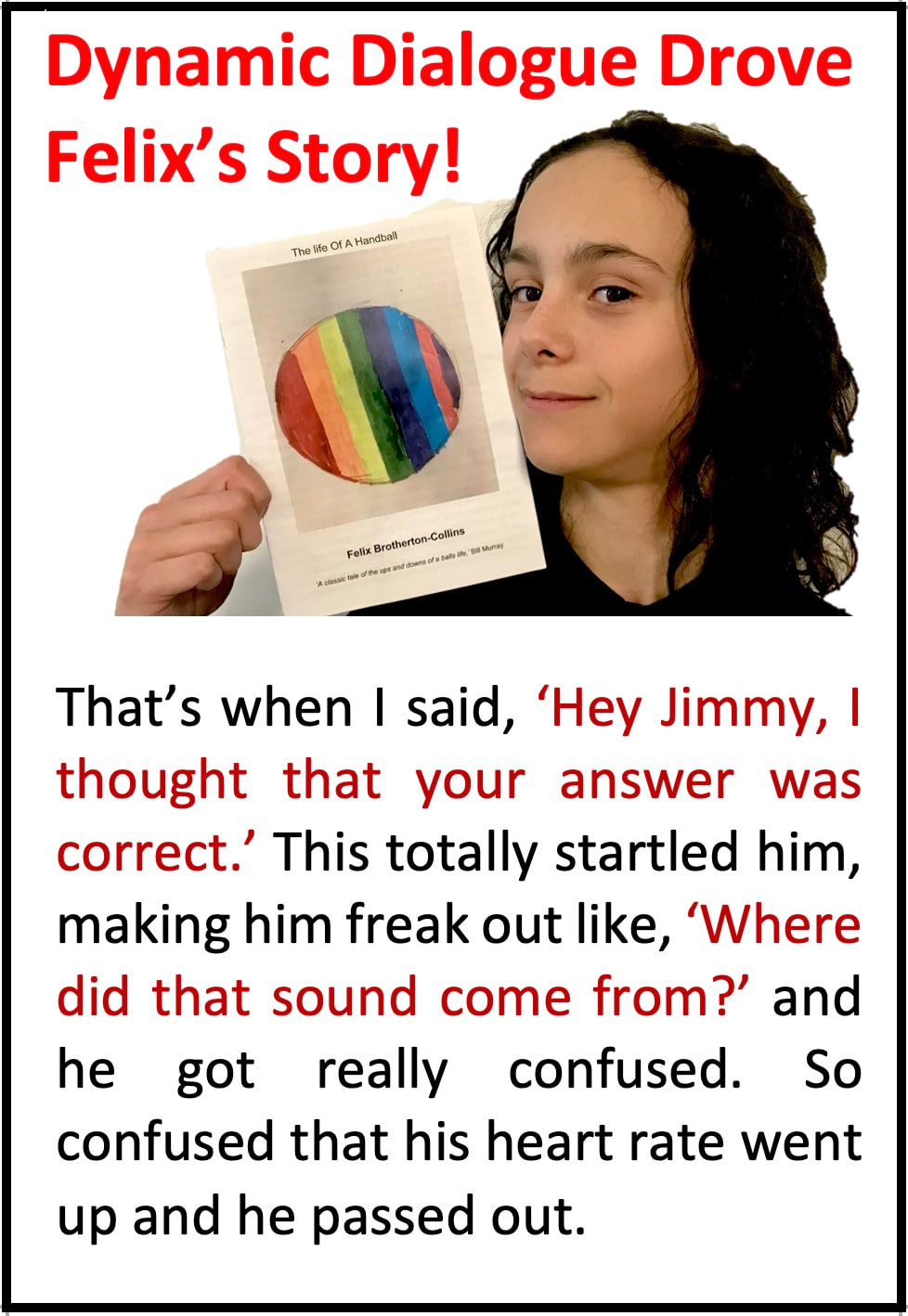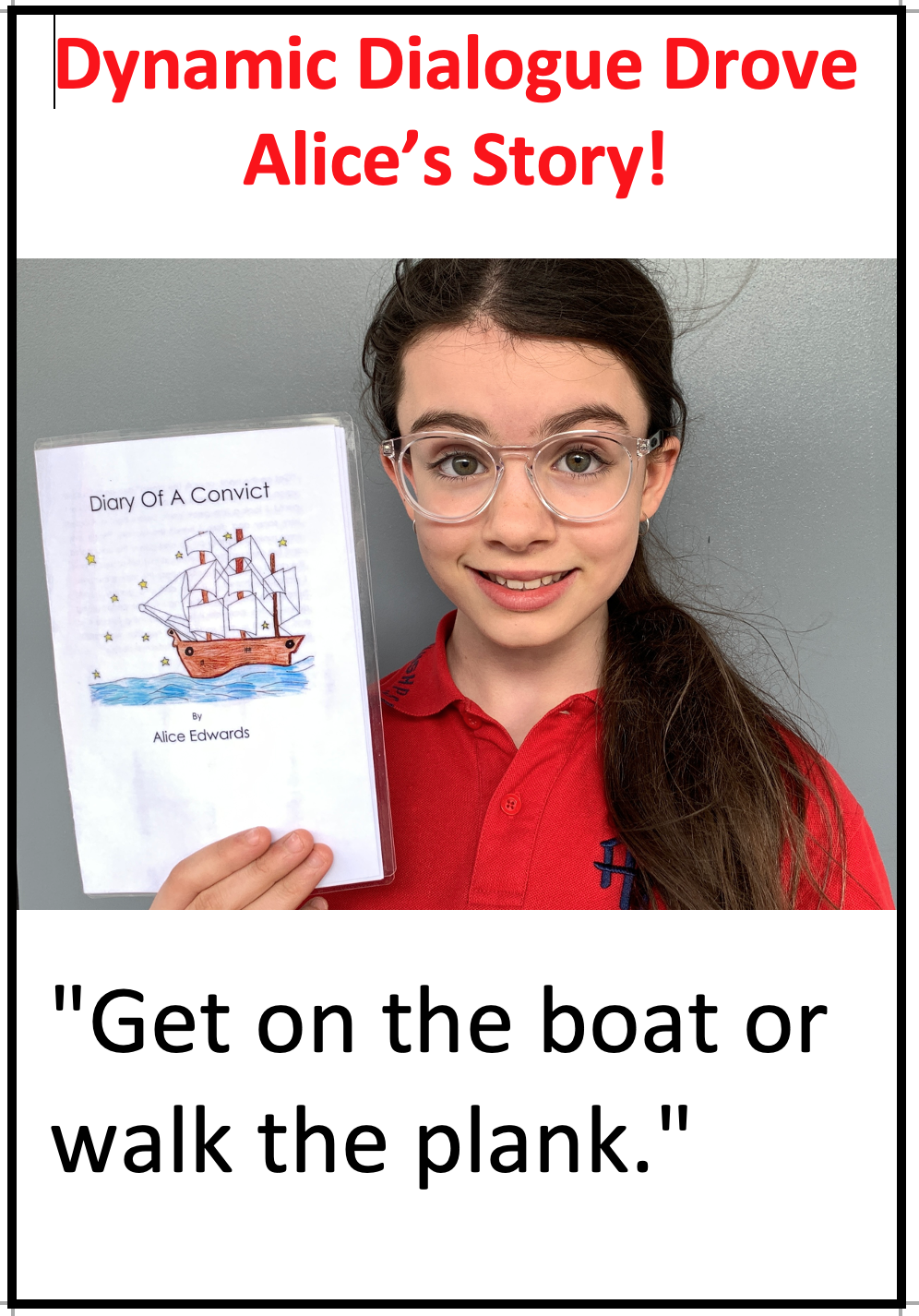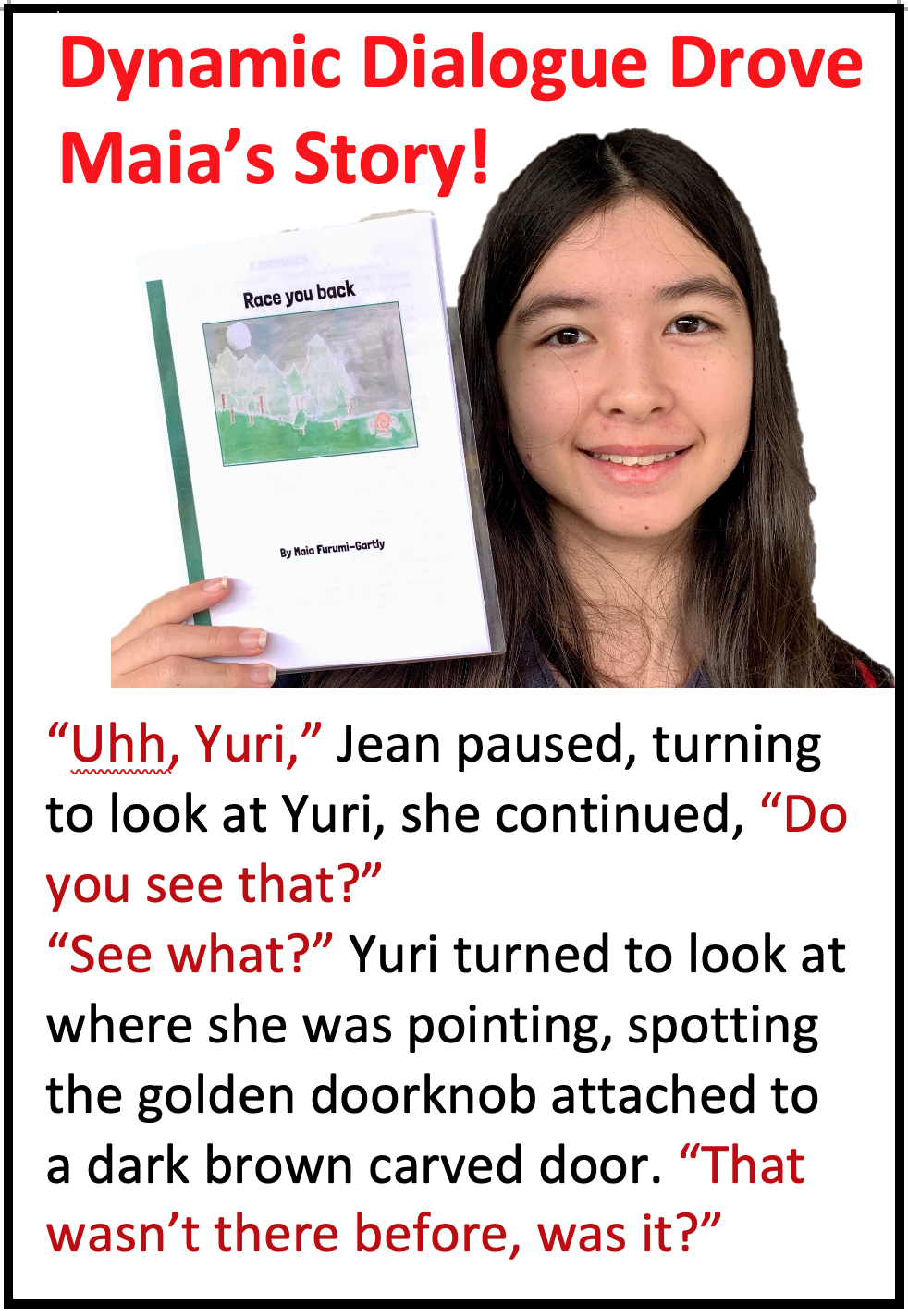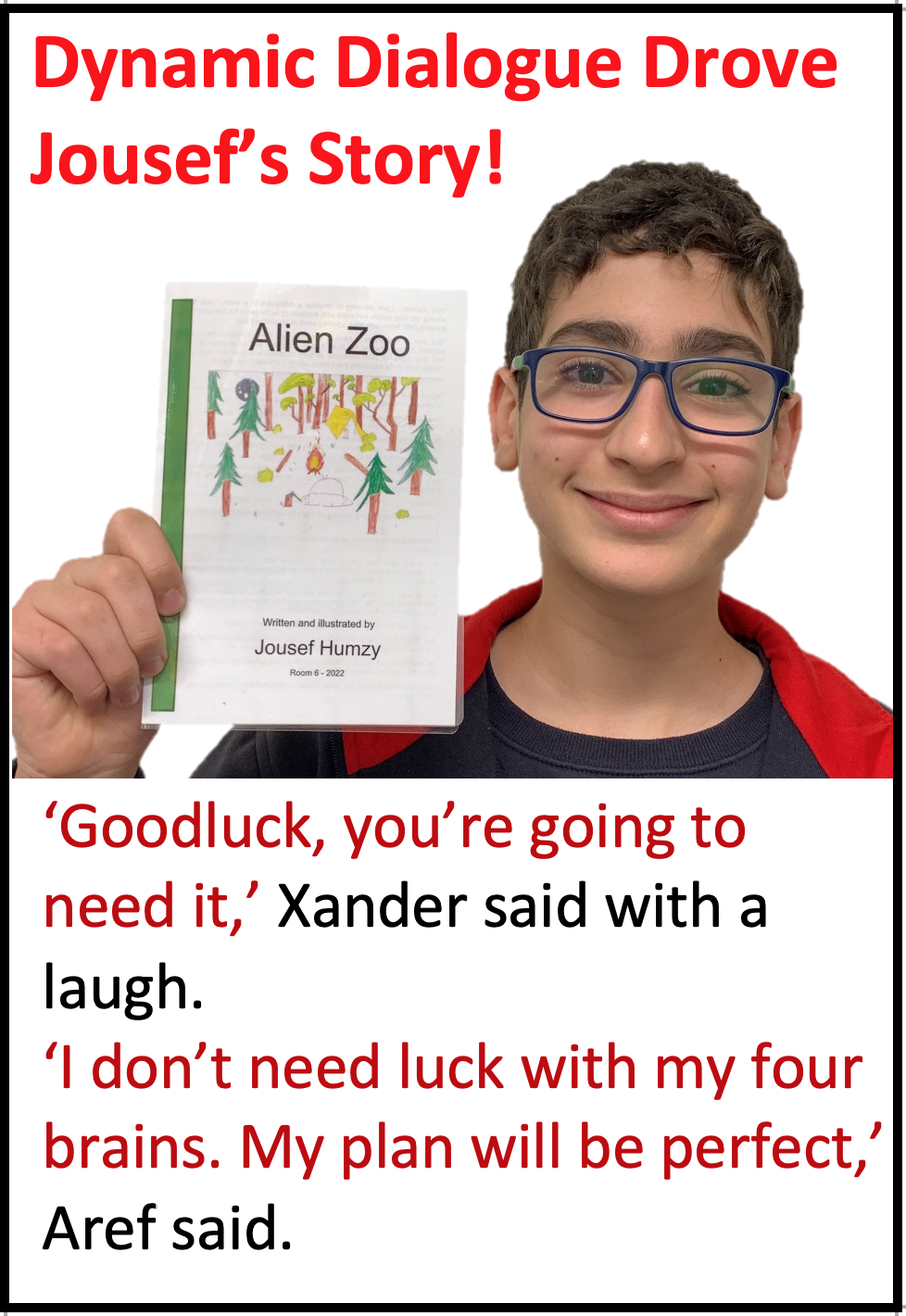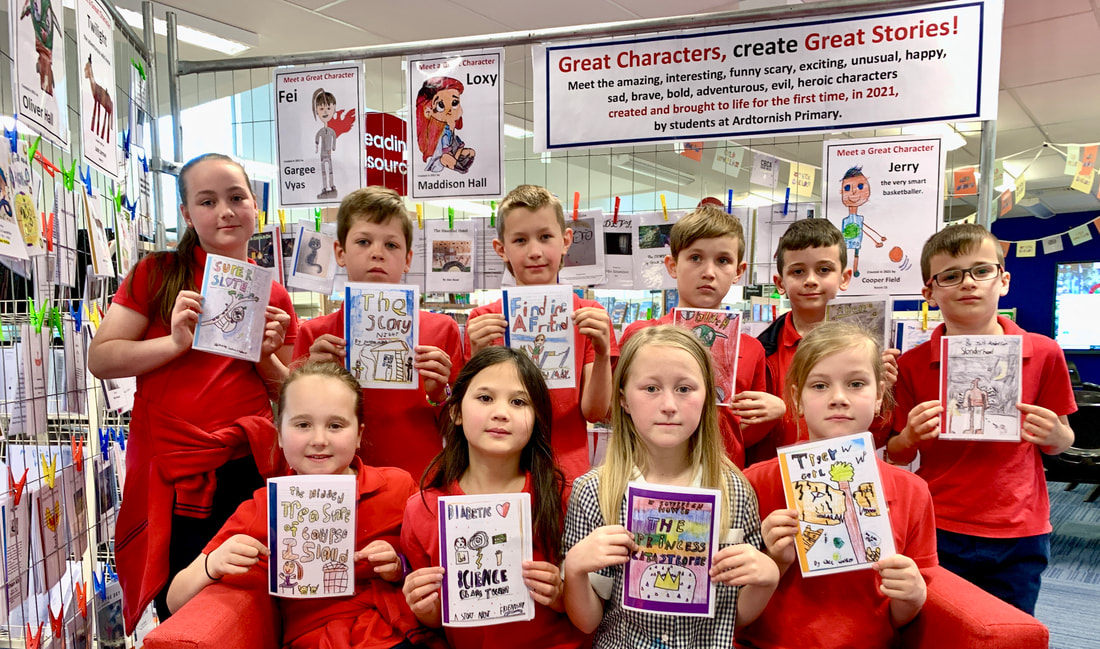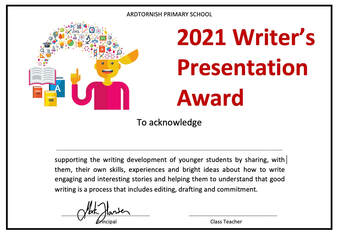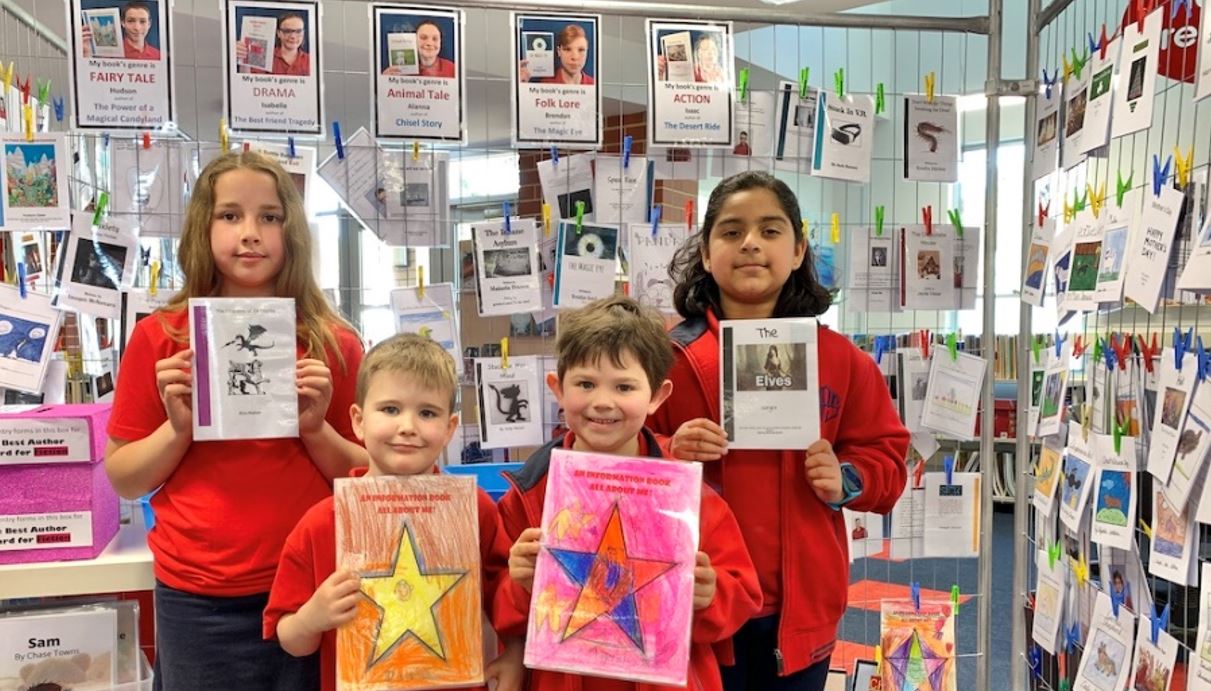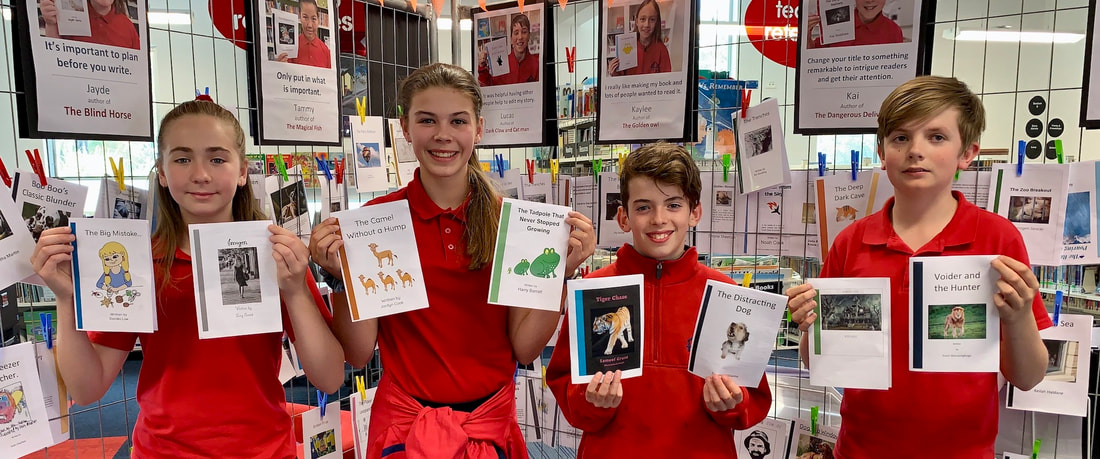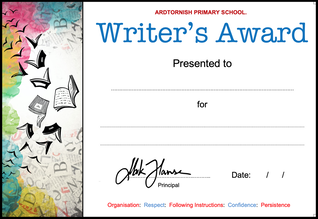Students as Authors - Developing a writing culture in our school by publishing and promoting student created books.
Students develop a stronger sense of themselves as writers when they have opportunities to publish their work for a genuine audience.
Hence our library contains a dedicated "Student Author" section where students can read each others stories and be encouraged to submit their own writing, in book form, when it is edited and polished.
Each year we run a 'Student Writers' Week,' with a specific theme, and place a display in the library of new books written by students leading up to this event.
Hence our library contains a dedicated "Student Author" section where students can read each others stories and be encouraged to submit their own writing, in book form, when it is edited and polished.
Each year we run a 'Student Writers' Week,' with a specific theme, and place a display in the library of new books written by students leading up to this event.
Student Writers' Week 2023 - Our Fifth Year.
Theme: An interesting complication makes a story engaging!
This occurred in Week 8 of Term 3 2023.
Every narrative presents the central character with a complication they must overcome.
Wanting to discover how they do this it is what keeps the reader engaged, enjoying the story, and wanting to read to the end.
Every narrative presents the central character with a complication they must overcome.
Wanting to discover how they do this it is what keeps the reader engaged, enjoying the story, and wanting to read to the end.
Student Writers' Week 2022 - Our Fourth Year.
Theme: Let Dynamic Dialogue Drive Your Story.
All students from year 4- 6, and some from year 3, wrote books with a focus on the use of dialogue.
The books were on display in the library, in Weeks 9 -10 of Term 3.
Students were encouraged to read each others books and to vote for their favourites. Nominated authors and those who nominated them went into a prize draw at an assembly.
The books were on display in the library, in Weeks 9 -10 of Term 3.
Students were encouraged to read each others books and to vote for their favourites. Nominated authors and those who nominated them went into a prize draw at an assembly.
All students from year 4- 6, and some from year 3, wrote books with a focus on the use of dialogue. The books were on display in the library, in Weeks 9 -10 of Term 3.
Students are encouraged to read each others books and to vote for their favourites. Nominated authors and those who nominate them went into a prize draw at an assembly next term.
The standard of student books was outstanding and students showed growth in their ability to write stories using rich dialogue that could engage a reader.
Here is an extract from a book, ‘Bag Full of Trouble,’ by a year six student, Eli Carter which is a wonderful example of dialogue as story telling.
’Oh hell, we are gonna get arrested for murder,’ said Jack.
‘Not if we escape out the window,’ said Eli.
‘But we are on the fourth floor,’ said Sam.
Don’t worry there is a trampoline under our window that belongs to the kid on the bottom floor,’ said Jack, ‘Let’s jump.’
Using dialogue to tell the story is one of the ‘Seven Step’ procedures to improve writing.
Teachers used ‘Bump it up walls’ to support students to self-assess and set improvement goals for their writing. The Brightpath assessment tool, was also used to celebrate what students can do as writers and identify skills they need to further develop to become more sophisticated writers.
‘Seven Steps’ is used as a framework to support students to plan and edit their writing, so it is more engaging for an audience.
The Seven Steps program supports students to:
1. Plan for Success – Planning their story before they started.
2. Use Sizzling Starts - Starting where the action was.
3. Tighten Tension - Putting detail in their story so the reader stay’s engaged
4. Create Dynamic Dialogue - Using dialogue to explain events in the story, fill in unknown facts and make their characters come alive as you hear their responses.
5. Show, Not Tell - Building information into their text to tell people about their character and events without directly telling them.
6. Ban the Boring Bits - Explaining how they took out, or left out, all the things that might make their story boring.
7. Create an Exciting Ending or Ending with a message.
Students are encouraged to read each others books and to vote for their favourites. Nominated authors and those who nominate them went into a prize draw at an assembly next term.
The standard of student books was outstanding and students showed growth in their ability to write stories using rich dialogue that could engage a reader.
Here is an extract from a book, ‘Bag Full of Trouble,’ by a year six student, Eli Carter which is a wonderful example of dialogue as story telling.
’Oh hell, we are gonna get arrested for murder,’ said Jack.
‘Not if we escape out the window,’ said Eli.
‘But we are on the fourth floor,’ said Sam.
Don’t worry there is a trampoline under our window that belongs to the kid on the bottom floor,’ said Jack, ‘Let’s jump.’
Using dialogue to tell the story is one of the ‘Seven Step’ procedures to improve writing.
Teachers used ‘Bump it up walls’ to support students to self-assess and set improvement goals for their writing. The Brightpath assessment tool, was also used to celebrate what students can do as writers and identify skills they need to further develop to become more sophisticated writers.
‘Seven Steps’ is used as a framework to support students to plan and edit their writing, so it is more engaging for an audience.
The Seven Steps program supports students to:
1. Plan for Success – Planning their story before they started.
2. Use Sizzling Starts - Starting where the action was.
3. Tighten Tension - Putting detail in their story so the reader stay’s engaged
4. Create Dynamic Dialogue - Using dialogue to explain events in the story, fill in unknown facts and make their characters come alive as you hear their responses.
5. Show, Not Tell - Building information into their text to tell people about their character and events without directly telling them.
6. Ban the Boring Bits - Explaining how they took out, or left out, all the things that might make their story boring.
7. Create an Exciting Ending or Ending with a message.
Student Writers' Week 2021 - Our Third Year.
Theme: Meet My Unique Character
The 2021 year’s theme was “Meet My Unique Character” because “Great Characters make Great Stories.”
A display run in the library, in Week 8 – 10 of Term 3, consisted of books students had written with a focus on character development.
As a part of this special week students in upper year classes, visited students in younger classes to read them an extract from their book and explain how they used one of the 'Seven Steps' procedures to develop their writing.
A display run in the library, in Week 8 – 10 of Term 3, consisted of books students had written with a focus on character development.
As a part of this special week students in upper year classes, visited students in younger classes to read them an extract from their book and explain how they used one of the 'Seven Steps' procedures to develop their writing.
The students pictured above are some of the proud writers who developed their book's character and wrote about them.
Classes use ‘Bump it up walls’ to support students to self-assess and set improvement goals for their writing.
Brightpath has been used to celebrate what students can do as writers and identify what skills they need to develop next to become more sophisticated writers.
Seven Steps has been used as a framework in many classrooms to support students to plan and to edit their writing so it is more engaging for an audience and each speaker can focus on one of these elements or something unique they learned through the writing process.
Classes use ‘Bump it up walls’ to support students to self-assess and set improvement goals for their writing.
Brightpath has been used to celebrate what students can do as writers and identify what skills they need to develop next to become more sophisticated writers.
Seven Steps has been used as a framework in many classrooms to support students to plan and to edit their writing so it is more engaging for an audience and each speaker can focus on one of these elements or something unique they learned through the writing process.
Student Writers' Week 2020 - Our Second Year.
Theme: Choose a genre.
Kira, Patrick, Ashton and Gargee proudly display their books.
Students develop a stronger sense of themselves as writers when they have opportunities to publish their work for a genuine audience. For the second year running, we held a 'Student Writers’ Display’ In Term 3 from Week 8 till the end of week 10 in the library.
Students from years R-3 had an opportunity to publish both fiction and nonfiction texts for others to enjoy. In this second year we could already see the improvement in students’ writing as they produced books that were highly polished.
This year all students were invited to nominate their favourite fiction and nonfiction book and go into the draw for a special prize, for both themselves and the author of the book they nominated, at the last assembly for the term.
When nominating books students rated how well the author of a fiction text:
• Produced an engaging sizzling start that made them want to read more.
• Developed a clear orientation and complication, with a resolution that made sense.
• Developed characters and described, them with lots of ‘showing not telling.’
• Used dialogue in the story that was well written and helped them to follow the plot.
• Correctly used grammar, spelling and punctuation and edited their work carefully.
When nominating nonfiction books students rated how well the author:
• Gave the book a very clear and easy to read structure.
• Provided information in paragraphs, which started with topic sentences.
• Used headings and subheadings to make it easy to find information
• Provided Diagrams and drawings to give extra information about the topic.
When the ‘Writers’ Display’ finished the student books joined our library’s growing "Student Author" section.
This permanent part of our library collection allows students to read each other’s stories and encourages them to submit their own writing, in book form, when it is edited and polished. In this way students can learn from each other.
Student Writer's Week 2019 - Our Inaugural Year.
Theme: Using good writing processes produces good stories.
Students develop a stronger sense of themselves as writers when they have opportunities to publish their work for a genuine audience. For the second year running, we held a 'Student Writers’ Display’ In Term 3 from Week 8 till the end of week 10 in the library.
Students from years R-3 had an opportunity to publish both fiction and nonfiction texts for others to enjoy. In this second year we could already see the improvement in students’ writing as they produced books that were highly polished.
This year all students were invited to nominate their favourite fiction and nonfiction book and go into the draw for a special prize, for both themselves and the author of the book they nominated, at the last assembly for the term.
When nominating books students rated how well the author of a fiction text:
• Produced an engaging sizzling start that made them want to read more.
• Developed a clear orientation and complication, with a resolution that made sense.
• Developed characters and described, them with lots of ‘showing not telling.’
• Used dialogue in the story that was well written and helped them to follow the plot.
• Correctly used grammar, spelling and punctuation and edited their work carefully.
When nominating nonfiction books students rated how well the author:
• Gave the book a very clear and easy to read structure.
• Provided information in paragraphs, which started with topic sentences.
• Used headings and subheadings to make it easy to find information
• Provided Diagrams and drawings to give extra information about the topic.
When the ‘Writers’ Display’ finished the student books joined our library’s growing "Student Author" section.
This permanent part of our library collection allows students to read each other’s stories and encourages them to submit their own writing, in book form, when it is edited and polished. In this way students can learn from each other.
Student Writer's Week 2019 - Our Inaugural Year.
Theme: Using good writing processes produces good stories.
Students comments about the writing process included:
- Good grammar really helps to make your story great - Cobey
- Stories don’t make sense without correct punctuation - Jack
- Hard work makes a great book - Erin
- It’s important to plan before you write - Jayde
- The more you read other’s books the better yours will get - Aria
- Restarting a story can be a really good thing - Isabel
- The more you describe the scene the easier it is to see the scene - Charli
- Showing not telling is important and funny endings make stories great - Harry
- Only put in what is important - Tammy
- Editing your work pays off when you have a good story at the end - Lachlan
- If you believe you can finish a story you will, but if you always put your story down you won’t get a good story - Danika
- The more time you spend writing the more interesting the story - Rhys
- Don’t use the same words too many times. Don’t be repetitive - Oscar W
- Change your title to something remarkable to intrigue readers and get their attention - Kai
- I have learned to express myself through my writing with help from peer, parent and teacher feedback - Karel
- I am proud that I created a published narrative and now I have a passion for writing and editing - Chelsea
- It is helpful having other people help to edit your story - Lucas
'Writer's Award' - presentations are given at each assembly
|
Student writing is encouraged and acknowledged at each assembly when a "Writer's Award' is presented to a number of students who have either made particular improvements as writers or produced outstanding texts.
Extracts of the students' work is read to the school and the strengths of their writing is highlighted for others to consider emulating. |

